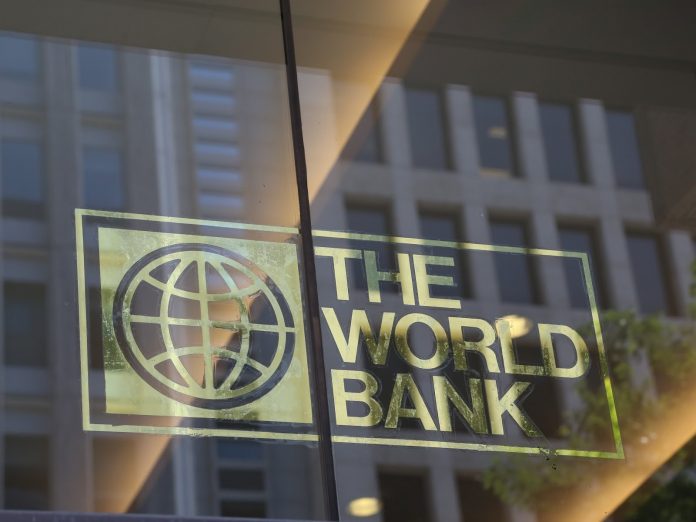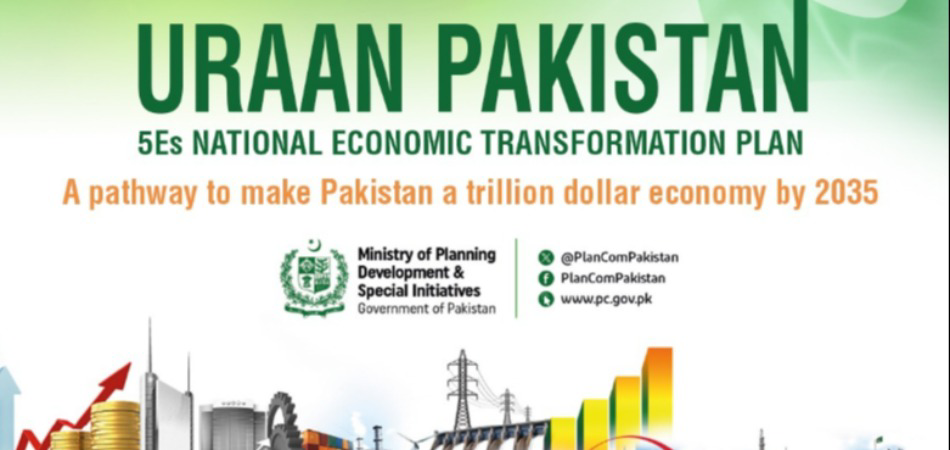Pakistan’s tax-to-GDP ratio is only 10.4%: World Bank

By MG News | September 25, 2023 at 12:56 PM GMT+05:00
September 25, 2023 (MLN): Pakistan's tax-to-GDP ratio has been on a declining trend, in the fiscal year 2022, tax collections were a mere 10.4% of GDP, against a tax capacity of over 22% of GDP, the World Bank noted in its “Strengthening Government Revenues” report published on Friday.
This decline in the tax-to-GDP ratio is closely linked to the increase in tax expenditures. At the federal level, these expenditures rose from 1.3% of GDP in FY16 to 2.7% of GDP in FY22.
Revenues in Pakistan are collected overwhelmingly at the federal level, with a heavy reliance on indirect taxes on consumption, including sales tax, customs duties, and excises, it noted.
The proportion of taxes collected by the federal government was at 91.2% by FY22, partly due to increased taxation of services by provincial governments.
Direct taxes (collected by the federal government) continue to account for only around 33% of total taxes collected.
Additionally, agricultural income tax revenues remain minimal, with over 90% of farmers falling below the tax threshold.
Total provincial revenue collection remains less than 1% of GDP.
World Bank's recommendations
The World Bank (WB) on Friday launched a new program titled “‘Reforms for a Brighter Future: Time to Decide” aimed at fostering a productive debate on the critical development policy issues being faced by Pakistan.
It made several recommendations to address these challenges and enhance revenue generation.
The WB emphasizes the importance of improving federal-provincial coordination. This will facilitate tax administration and policy reforms, reducing compliance difficulties due to the current fragmented structure.
Within the existing constitutional framework, efforts should be directed towards coordinating tax bases. This involves creating a single tax market and reducing interactions between taxpayers and revenue authorities.
Positive strides have already been made in harmonizing GST rules and definitions through federal-provincial revenue roundtables.
Ongoing digitization efforts should be expedited to cut compliance costs and minimize taxpayer interactions.
This includes initiatives such as data sharing between tax agencies, mandatory use of Computerized National Identity Cards (CNIC) for transactions, establishing a single portal for sales tax, and digitizing land records, including urban and rural lands.
At the federal level, reforms should concentrate on closing corporate tax exemptions. This could generate revenue equivalent to about 0.1% of GDP. Notable exemptions include those for power generation projects (Rs37 billion in FY21) and real estate investments (Rs26 billion).
Closing personal income tax loopholes and adjusting tax brackets could raise an additional 0.1% of GDP in revenue. Lowering the tax-free allowance and reducing the threshold for the top marginal tax bracket are recommended.
Increasing excise duties on socially harmful goods, such as cigarettes, with a uniform rate for all brands and an automatic inflation adjustment, could generate up to 0.4% of GDP in additional revenue.
Similar measures could be considered for other goods linked to environmental damage or negative health outcomes.
To reduce tax expenditures, the government should reconsider exemptions and concessionary rates in the energy sector, including petroleum (Rs280 billion), as well as exemptions related to machinery imports for power generation and transmission (Rs100 billion).
Costly exemptions introduced during the COVID-19 pandemic for pharmaceuticals, energy, and specific food items (Rs40 billion on imports and Rs100 billion on local supplies) should also be reviewed.
Moreover, eliminating exemptions for essential food items like oil, pulses, animal products, fruits, and dairy could result in savings of Rs100 billion in revenues, the WB noted.
Additionally, reevaluating concessionary rates on fertilizers could reduce fiscal costs by Rs90 billion.
The WB has provided a roadmap for Pakistan to strengthen its revenue generation efforts and address fiscal challenges effectively. Significant potential exists to improve taxation, as the current tax structure has led to inadequate revenues for the government.
Najy Benhassine, the country director for Pakistan at WB stated, “This may be Pakistan’s moment for significant policy shift.”
He said the discussion notes contributed to debates on long-standing policy issues that were muting Pakistan’s high economic and development potential.
“There is reasonable consensus on priorities and challenges. Determining specific solutions requires open debates on concrete, fundamental policy decisions. We hope this program of discussions will help build a consensus around a path towards inclusive, sustainable, and climate-resilient development,” the WB Country Director added.
As part of the ‘Reforms for a Brighter Future’ engagement program, the WB together with the Pakistan Institute of Development Economics, conducted extensive consultations across the country to seek inputs and feedback on the recommendations included in the draft Discussion Notes.
The ‘Reforms for a Brighter Future’ program will continue over the following months both online and at in-person events across the country.
Copyright Mettis Link News
Related News
| Name | Price/Vol | %Chg/NChg |
|---|---|---|
| KSE100 | 130,451.19 197.36M |
0.08% 107.16 |
| ALLSHR | 81,137.00 640.51M |
0.14% 113.01 |
| KSE30 | 39,901.88 77.88M |
-0.02% -6.38 |
| KMI30 | 190,126.84 97.18M |
0.31% 591.84 |
| KMIALLSHR | 54,912.96 334.25M |
0.24% 129.31 |
| BKTi | 34,699.36 19.25M |
-0.69% -241.37 |
| OGTi | 28,559.72 13.16M |
0.93% 263.67 |
| Symbol | Bid/Ask | High/Low |
|---|
| Name | Last | High/Low | Chg/%Chg |
|---|---|---|---|
| BITCOIN FUTURES | 110,040.00 | 110,195.00 109,200.00 |
-245.00 -0.22% |
| BRENT CRUDE | 68.49 | 69.00 68.32 |
-0.62 -0.90% |
| RICHARDS BAY COAL MONTHLY | 97.50 | 0.00 0.00 |
-0.75 -0.76% |
| ROTTERDAM COAL MONTHLY | 109.20 | 0.00 0.00 |
0.20 0.18% |
| USD RBD PALM OLEIN | 998.50 | 998.50 998.50 |
0.00 0.00% |
| CRUDE OIL - WTI | 66.82 | 67.50 66.65 |
-0.63 -0.93% |
| SUGAR #11 WORLD | 15.47 | 15.62 15.44 |
-0.11 -0.71% |
Chart of the Day
Latest News
Top 5 things to watch in this week
Pakistan Stock Movers
| Name | Last | Chg/%Chg |
|---|
| Name | Last | Chg/%Chg |
|---|




 Trade Balance
Trade Balance
 CPI
CPI